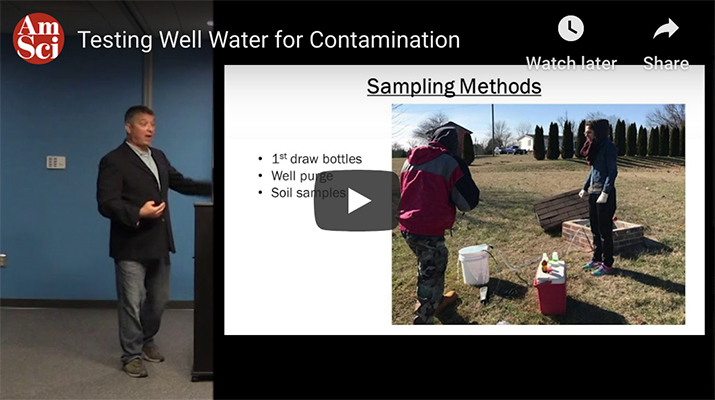Testing Well Water for Contamination
By Robert Frederick
Unregulated water supplies' contamination in North Carolina commonly exceed the health-based standards of municipal systems.
November 7, 2019
From The Staff Environment Human Ecology
After the 2014 coal ash spill into North Carolina's Dan River, the state required water testing around each of the Duke Energy coal ash storage facilities. The tests showed groundwater contamination, but testing wasn't expanded beyond those sites. So people in surrounding communities started to ask questions about their groundwater. But when researchers went to test groundwater in those communities, they had to figure out a way to engage the private well owners to participate.
"It's like the wild, wild west: there are no regulations that apply to private wells," says Andrew George at University of North Carolina – Chapel Hill, who eventually partnered with Avner Vengosh's lab at Duke University and Marc Edwards's lab at Virginia Tech to conduct the water tests.
According to the North Carolina Department of Health and Human Services, 25 percent of people in North Carolina get their water from private wells compared to 15 percent nationwide. But the only testing requirement for private wells in North Carolina is that they be tested for bacterial and chemical contaminants within 30 days of their construction, and that regulation applies only to private wells dug since 2008. That's even though North Carolina faces emergency, hurricane-related sources of well contamination on top of the more common forms of contamination in other states, including industrial pollution and naturally occurring contaminants.
The concern over coal ash contamination is with the heavy metals the ash contains: Poisoning from heavy metals is associated with a long list of symptoms, and no one wants to wait for symptoms to appear. Even when symptoms do appear, the root cause can still be hard to tease out, as famously portrayed in the film Erin Brockovich (2000) about one community's exposure to hexavalent chromium pollution.
Although treatment options vary somewhat based on the poison, the primary treatment is to let the body heal itself, which can only start after eliminating further exposure. So George, the community engagement coordinator for the UNC Center for the Public Engagement with Science, connected with community partners to conduct a citizen science sampling campaign because private wells are managed by the private landowner, which George says, "very, very often means that [the wells] go neglected, and they're very infrequently tested."
In a talk before the Research Triangle Park chapter of Sigma Xi (American Scientist is published by Sigma Xi), George explained how his team designed a study of potable water from private wells in North Carolina, how the study grew, mistakes they made, and lessons learned for others who may be interested in launching their own such studies and citizen science projects. His talk, which was open to the public, is presented below in its entirety. However, at George's request, unpublished data is not displayed (the request was made prior to allowing American Scientist to make the video recording, and we are publishing it with those slides blurred because we consider the story newsworthy. When the data is published, we will update this blog post with links to George's team's studies below the video.)
For more on this topic, please see the special issue on The Future of Water as well as the associated blog post Ongoing Water Issues.

American Scientist Comments and Discussion
To discuss our articles or comment on them, please share them and tag American Scientist on social media platforms. Here are links to our profiles on Twitter, Facebook, and LinkedIn.
If we re-share your post, we will moderate comments/discussion following our comments policy.